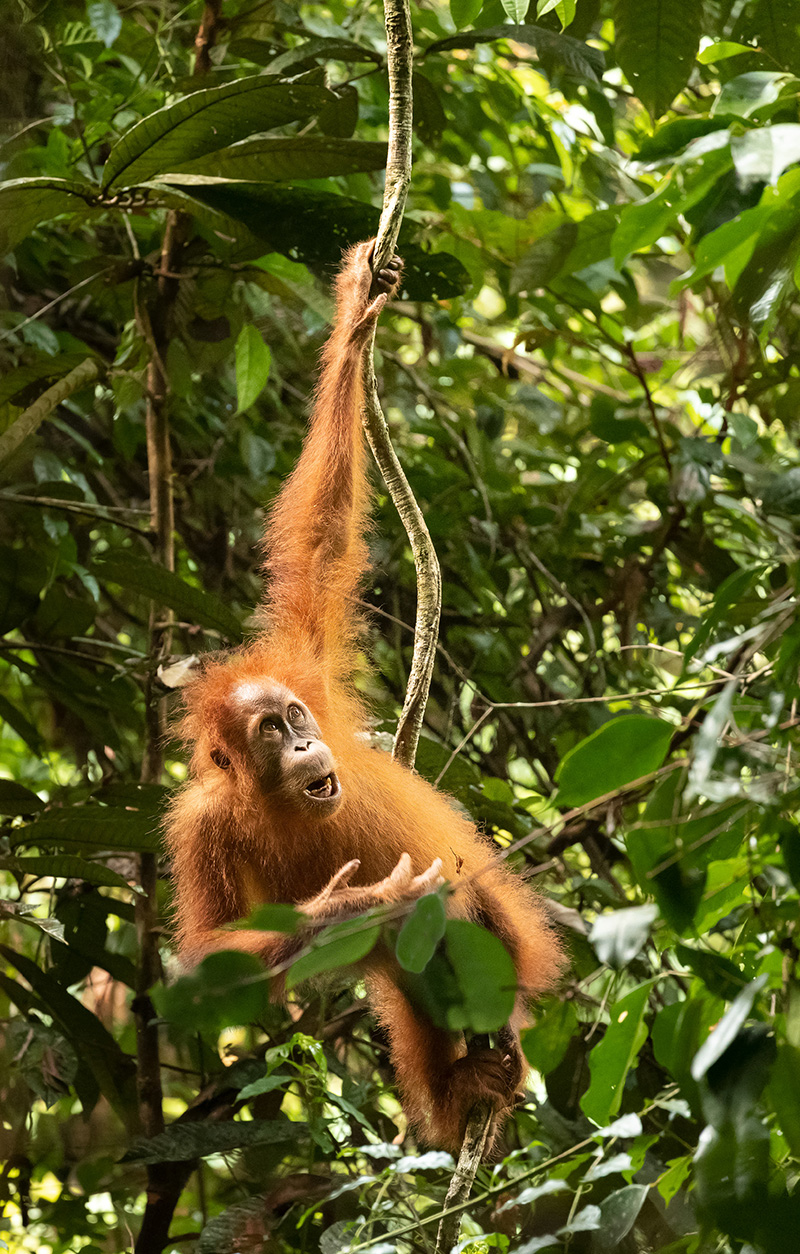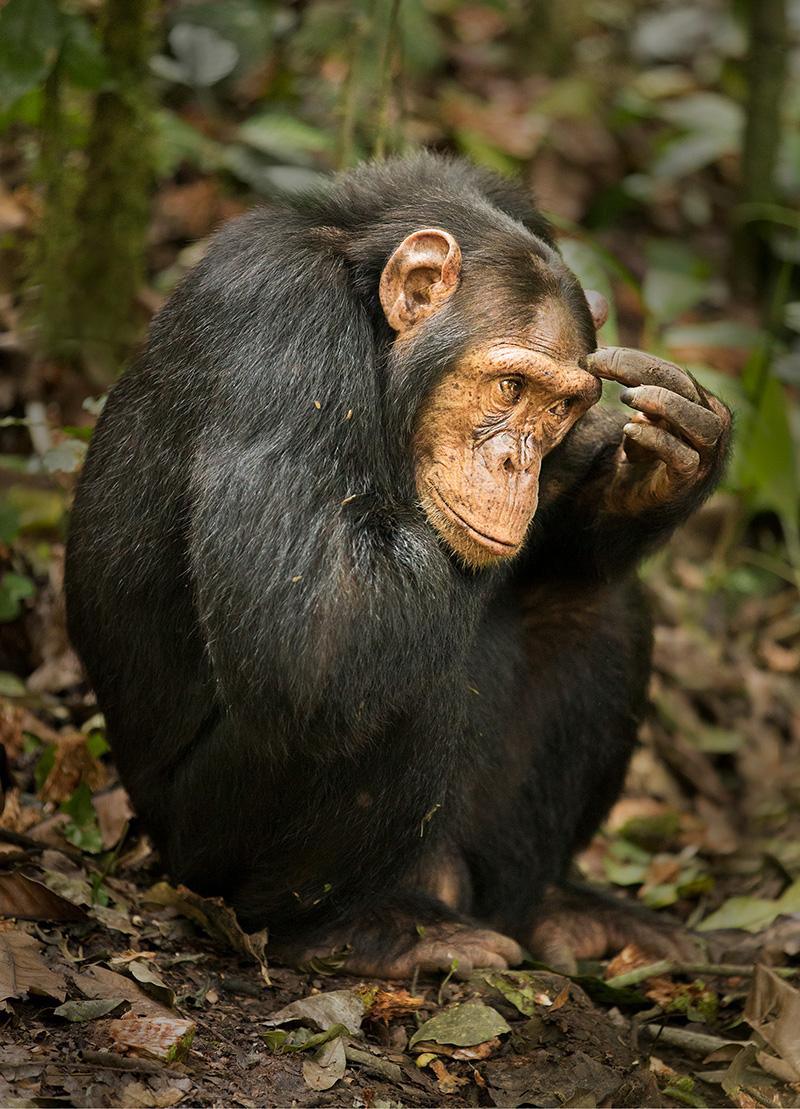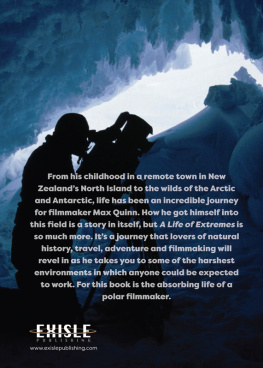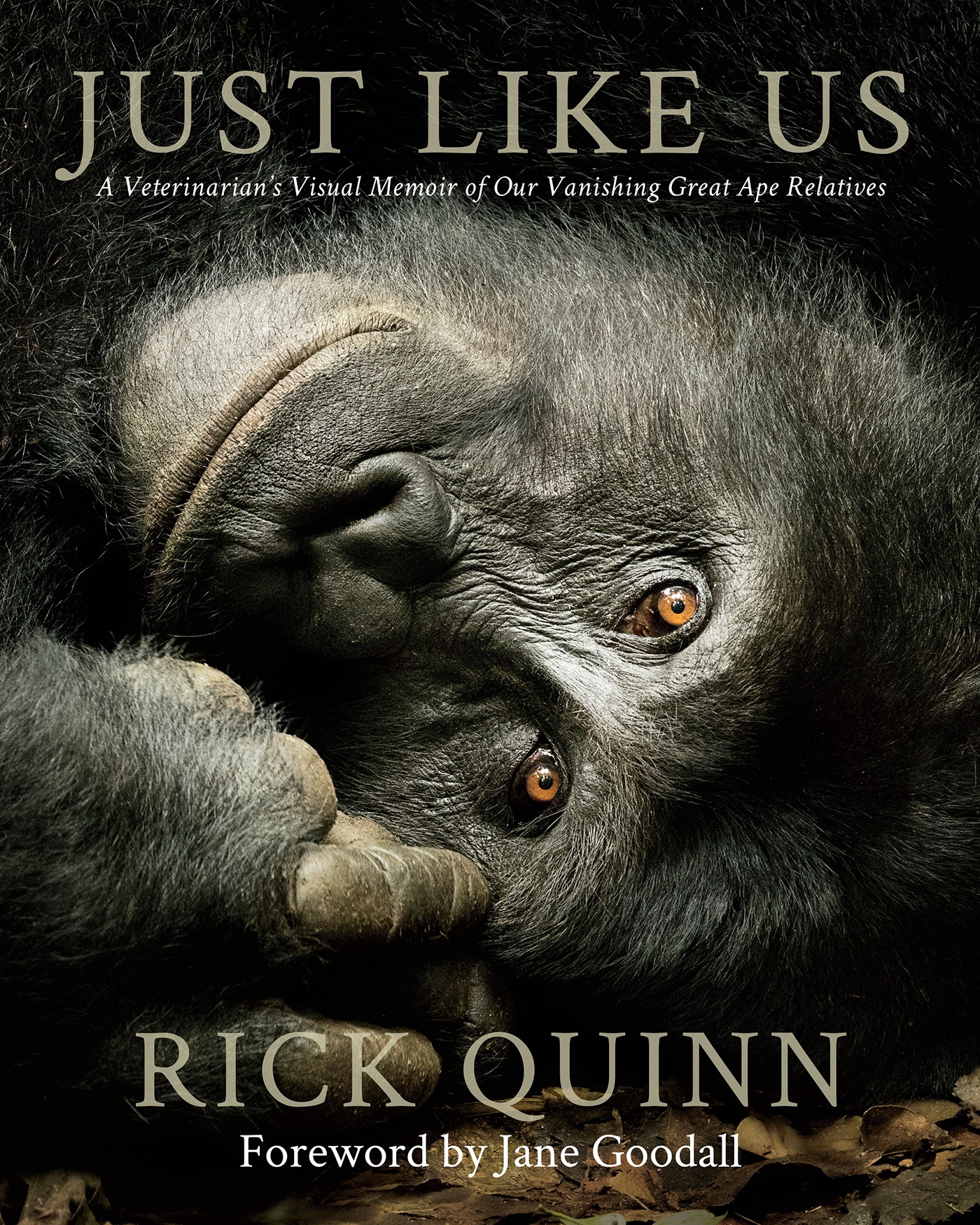Copyright 2020 Rick Quinn
All rights reserved.
No part of this book may be reproduced, or stored in a retrieval system, or transmitted in any form or by any means, electronic, mechanical, photocopying, recording, or otherwise, without express written permission of the publisher.
Published by Girl Friday Books, Seattle, Washington
Developmental and line editing: Kel Pero and Gail Hudson
Design: Paul Barrett
Project management: Devon Fredericksen
Image credits: cover & interior Rick Quinn; cover author photo Diane Hawthorne
For more on Rick Quinns work, visit www.docs4greatapes.org
ISBN (hardcover): 978-1-7348802-1-2
ISBN (ebook): 978-1-9548543-2-1
First edition
To the memory of my loving mom, Patricia L. Quinn, who planted the seeds of curiosity about people, places, and animals in her son and always made things better.
For the Little OnesMackenzie, Jamie, Liam, Avery, and their cousins-in-waitingthat you and your amazing parents might find your own ways to enjoy and protect all things natural.

Juvenile Sumatran orangutan, Sikundur, Northern Sumatra, Indonesia. Orangutans learn to move within the forest canopy by swinging on vines and swaying back and forth on tall saplings until their outstretched arms can grasp a limb from the next tree, pull it toward them, and transfer their weight. There are usually at least two limbs holding on to a tree at any one time.
Contents
Eastern Gorillas (Mountain): Rwanda
Eastern Gorillas (Mountain): Rwanda and Uganda
Chimpanzees: Uganda and Congo Republic
Orangutans: Borneo
Bonobos: Democratic Republic of the Congo
Orangutans: Sumatra
Eastern Gorillas (Grauers): Eastern Democratic Republic of the Congo
Western Lowland Gorillas: Central African Republic and Congo Republic

Chimpanzee, Kibale National Park, Uganda. Chimpanzees have a low forehead with a very prominent brow ridge and eyes that are deep set and relatively close together. As the author quietly photographed this young male, he got the impression that he was deep in thought.
Foreword
A cross the once vast forests of Africa and Asia, great ape populations are in rapid decline. Chimpanzees and bonobos are designated as endangeredthe Western chimpanzee is critically endangered, as are both orangutans and gorillas. The causes for their decline are numerous and nearly all are linked to human activity. By raising awareness about these magnificent animals, our closest living relatives, and illustrating how seemingly disparate issues are interconnected, Rick Quinn wants to mobilize ordinary citizensacting as consumers, voters, and investorsto help save these vanishing and iconic species.
On every page, Ricks sensitive observations simultaneously move the heart and feed the mind. His powerful images complement his thorough researchresearch that has clearly been undertaken by someone with a passion for understanding and protecting great apes, the people who live close to them, and the extraordinary landscapes humans and great apes share.
I first met Rick when I spoke at Western University, where he had organized an evening event as part of my Canadian lecture tour. Since that initial meeting, our paths have crossed on several occasions and I have come to know him and his family as close friends, as well as friends of so many other animals. Rick is a veterinarian and educator and he has gradually expanded his interests in the world of wildlife conservation and advocacy. He has photographed each of the great ape species in their natural forest settings in Asia and Africa and many of the images are included in this book. Also, Rick has been very generous in donating many of these high-impact photographs to support the work of the Jane Goodall Institute.
In Just Like Us, Rick shows how great apes are affected by human political strife and economic hardship. The dominant threats to their survival are illegal hunting for bushmeat sold in local markets and exported to expat communities abroad; the shooting of mothers to steal their infants for the live animal trade; and illegal logging and surface mineral extraction that destroy great ape habitat. Moreover, human populations are growing and people are penetrating ever further into the apes forest homes, carrying with them diseases to which the apes may be susceptible, as they are biologically so close to us. These threats are compounded by the reproductive cycles of all great apesa female chimpanzee in the wild, for example, usually does not have her first infant until she is eleven or twelve years old, and then there is a birth interval of an average of five years.














